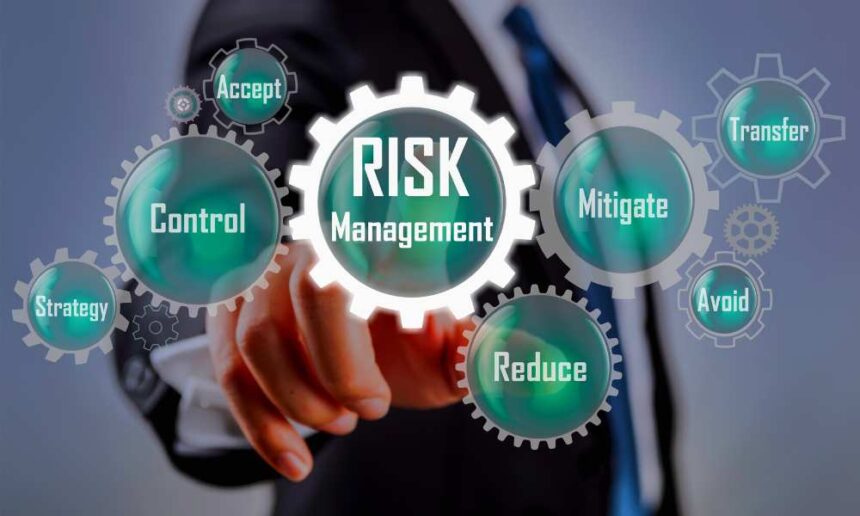Risk management is an important part of any profession, especially for quantity surveyors. As a professional in the field of construction and engineering, it is essential to be aware of the potential risks that may arise when dealing with projects. This article will address how risk management can benefit quantity surveyors and provide tips on how they can incorporate it into their everyday practices. To understand why risk management is important for quantity surveyors, it’s necessary to look at the nature of their job.
Definition of Risk Management
Risk management is the process of identifying, assessing, and controlling potential risks to an organization and its stakeholders. It is essential to successful project management, as it helps prevent financial losses due to unexpected events or circumstances. Risk management seeks to minimize the impact of risks on a project by anticipating them and formulating plans for how they can be addressed.
In the context of quantity surveying, risk management involves ensuring that projects are properly planned and executed within the allocated budget. This includes developing detailed estimates for expected costs, scheduling processes, contracts, change orders, payments, etc., and setting up systems for monitoring and controlling financial risk throughout the project duration. Through careful assessment of all possible risk sources from internal (cost overruns) and external (legal/regulatory changes) factors, quantity surveyors can help organizations avoid costly mistakes or delays in their projects.
Understanding Risks
It is an important concept for successful quantity surveyors. To understand risks, it is essential to know what the risk is and how it affects the project.
The most common type of risk faced by quantity surveyors includes financial risks such as cost overruns and delays in payment from clients. Additionally, there are also non-financial risks including environmental damage, safety issues, or reputational damage due to poor quality work. It is important to identify these potential risks before they become a problem so that suitable strategies can be implemented to manage them effectively.
To properly assess and understand the risks associated with a project, a quantity surveyor needs to consider factors such as the location of the site, current market conditions, and possible legal issues that may arise during construction.
Identifying Key Players
They are an important task for quantity surveyors, and one of the most crucial parts of this process is identifying key players. The key players in any construction project will be those who directly influence the outcome, and whose roles could lead to potential risks. These include the main contractors, subcontractors, suppliers, financiers, and clients.
Quantity surveyors are responsible for analyzing these parties’ roles and responsibilities in relation to the project objectives. They should closely monitor each party’s performance throughout the duration of the project to ensure that risks are minimized. It is also important that they keep track of changes in personnel or regulations that could affect their work and any new technologies or techniques being implemented.
Managing Cost Overruns
Quantity surveyors must be especially mindful when it comes to managing cost overruns. This is because the risk of unexpected costs can significantly disrupt an entire project. Several strategies should be employed to minimize the chances of a budget exceeding its projected limits.
First and foremost, quantity surveyors should ensure that all estimates are realistic and accurate at the start of the project. It’s also important to track actual expenses against estimated ones in order to identify potential problems better before they arise. Additionally, surveying professionals should consider establishing a contingency fund to cover unforeseen costs during a project’s lifespan. Finally, it’s generally advisable for quantity surveyors to have open lines of communication with their clients, so they can address any cost overages as soon as possible.
Mitigating Contract Disputes
They are well-versed in the complexities of contract disputes and how to manage them. A well-defined risk management plan is essential for mitigating potential problems when a dispute arises. A good plan will include strategies for identifying risks, assessing their severity, and developing mechanisms to reduce them before they become an issue.
The use of appropriate legal advice is key to successfully navigate contract disputes. Legal advice should be sought prior to entering into a contract, as well as during dispute resolution proceedings. Additionally, knowledgeable contractors can help prevent disputes by anticipating issues and addressing them proactively. The quantity surveyor should maintain regular communication with everyone involved in the project, documenting any concerns or disagreements that arise throughout the process so that it can be addressed quickly and efficiently if a dispute does occur.
Quality Assurance
Quality assurance is a key part of the risk management process for quantity surveyors. This process involves identifying and evaluating risks that could lead to deviations from project goals and budget and developing strategies to mitigate those risks. Quality assurance helps ensure that all stakeholders involved in a project understand the risks associated with it, and are working together to reduce them.
When deciding how best to reduce risk, quantity surveyors must consider multiple aspects such as cost-benefit analysis, scheduling feasibility, product reliability, safety concerns, and other factors. Quality assurance can help facilitate these processes by providing objective feedback on the potential outcomes of different approaches. Additionally, quality assurance can also provide assistance in monitoring progress throughout the lifecycle of a project in order to ensure its successful completion.
Benefits of Risk Management
It can help to identify, analyze and reduce the chances of any potential risks that could arise within a construction project. There are numerous benefits associated with successful risk management, which can contribute significantly to the success of any project.
First, having an effective risk management process in place helps minimize the financial loss associated with a project. By being able to identify potential risks and plan accordingly accurately, it is possible to take proactive steps which will ensure that costs do not exceed those predicted in the initial budgeting stages. This will provide greater cost certainty throughout the project’s life cycle and make it easier for quantity surveyors to allocate resources more efficiently.
Second, effective risk management also helps increase safety on site by reducing or eliminating any potential hazards that may be present during construction.
Conclusion
Risk management plays a critical role in quantity surveying. It is important for quantity surveyors to understand the various risks associated with their work and how to manage them. This will enable them to control costs and resources better, protect stakeholders from financial losses, and complete projects on time and within budget. Furthermore, risk management can help quantity surveyors provide proactive solutions if unexpected events arise.



